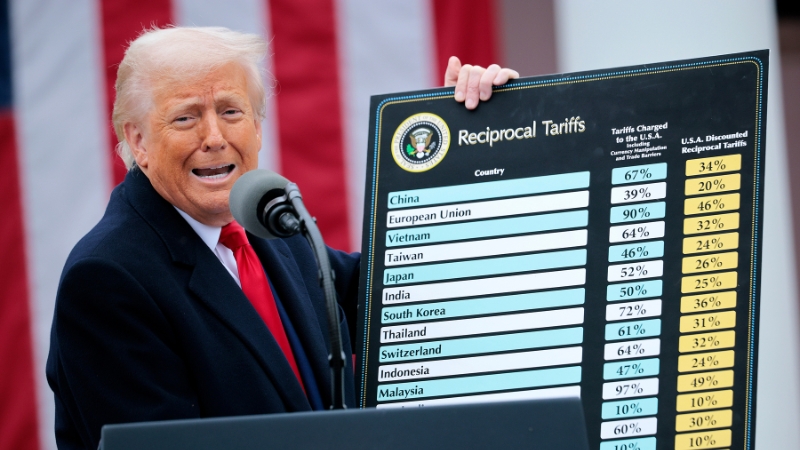 Image Credit: Diy13 / Getty
Image Credit: Diy13 / Getty On Friday the Federal Reserve Bank website published a “FED Notes” article by Colin Weiss regarding the theory and phenomenon of central banks revaluing their gold reserves in order to increase nominal wealth without increasing debt from the printing of debt-based fiat currencies.
“With public debt at high levels, some governments have begun to explore financing additional expenditures without raising taxes while also not increasing public debt outstanding. One possibility is using proceeds from valuation gains on gold reserves, as has been floated in the U.S. and Belgium recently,” the paper said.
The government of the U.S. holds 261.5 million troy ounces of gold, according to the paper. Currently the government proclaims a statutory price of $42.22 per troy ounce for the valuation of this precious metal, or about 1.25 percent the current market value per ounce as of the writing of this article – $3,379.40
Of note, the potential proceeds from a revaluation of U.S. gold reserves to current market price would equal about 3 percent of U.S. GDP, according to Figure 2 of the paper. The International Monetary Fund (IMF) reports U.S. GDP outlook for 2025 as $30.5 trillion while the World Bank reports the U.S. GDP for 2024 as $29.18 trillion.
In the last three decades, five countries have used proceeds from such valuation gains:
This note reviews the rare cases when countries used proceeds from valuation gains on gold and foreign exchange reserves. Over the past 30 years, only five countries have done so—Germany, Italy, Lebanon, Curacao and Saint Martin, and South Africa. What motivated the governments in these countries to use the proceeds from valuation changes in their official reserves? How were the revaluations implemented, and what were the outcomes? Revaluation proceeds have been either used by the central bank, as in the cases of Italy and Curacao and Saint Martin, or by the central government, as in South Africa, Lebanon, and Germany.
The paper explained that while revaluation of gold reserves can help an acute issue, it won’t solve broad systemic issues of the economy:
Central governments have drawn on revaluation proceeds to retire existing debts, often in exceptional fiscal circumstances. While reducing the debt stock using revaluation proceeds improves the fiscal situation at the margin, drawing on revaluation proceeds may not address larger structural challenges.
While market prices of gold fluctuate, generally growing at enormous rates over the last few decades, central bank holdings of a country’s reserves can be valued at a historic level, as is the case with the U.S. gold reserve:
Some value their gold reserves at their historic cost; others report it at current market prices. When central banks report their holdings at current market prices (fair value), the unrealized profits or losses from valuation changes are recorded in “revaluation accounts” on the liability side of the balance sheet. Practically, the unrealized valuation changes in gold reserves are often reported together with the valuation changes on foreign exchange reserves in a single entry on the balance sheet. When gold is valued at historic cost (or modified historic cost), gold reserves can be revalued at market prices (or values closer to market prices) to generate revenues.
The five most recent cases of countries revaluing their gold reserves were detailed in the paper. Notably, they are broken down into three main categories, but regardless of the category the quantity of the reserves remained unchanged during the revaluation process (either in terms of the physical amount of gold or the par value of assets held as reserves).
The first category of revaluation is when gold reserves are valued at a historic cost, with the central government as the end user. The second category is when gold reserves are reported at fair (market) value and the funds listed in revaluation accounts are transferred to the central government. The third is when gold reserves are reported at fair value and the central bank uses its revaluation accounts to offset other operating losses.
The Central Bank of Curacao and Saint Martin engaged in simultaneous sale and purchase transactions involving $55 million of their gold reserves ($5 million in 2021 and $50 million in 2022):
The central bank’s annual reports for these years state that they sold portions of their gold reserves and then immediately repurchased this gold at the same price to convert unrealized valuation gains on their gold reserves into realized profits (CBCS, 2022, 2023). Essentially, after the transactions, the CBCS could book these now-realized profits as income and use them to offset other losses incurred by the bank in these years.5 In 2021, generating this additional income allowed the CBCS to cover the remaining losses entirely out of retained earnings from 2019, while the 2022 revaluation-related transaction allowed the bank to turn a small net profit that year.
Combined, these two simultaneous sale purchase transactions involved about 8 percent of the CBCS’s gold reserves and was equivalent to about 0.6 percent of the 2021 and 2022 GDP of Curacao and Saint Martin, relatively modest amounts compared to other cases and leaving plenty of scope for additional use of the revaluation accounts. However, in 2023, the CBCS did not conduct a simultaneous purchase and sale transaction involving its gold reserves to offset continued operating losses. Instead, it sold just over 1 percent of its gold reserves to generate income to offset losses and shifted its official reserves portfolio more towards assets that have higher yields to “increase…interest income” (CBCS, 2024). That move was thus part of a larger rebalancing of the CBCS’s official reserves portfolio towards assets that generated significant interest income. Therefore, the CBCS appears to have used its gold revaluation accounts to help offset losses in a couple years, but it relied on other means to generate a more permanent increase in income.
In 2002 the Bank of Italy transferred €13 billion from its gold revaluation accounts, or about half of the 2001 value of the account, to help cover losses:
Specifically, the proceeds were used to cover some of the losses resulting from a conversion of nonmarketable sovereign bonds held by the Bank of Italy to marketable debt securities to comply with EC Treaty regulations. The nonmarketable bonds had originally been issued to the Banca d’Italia in 1993 to replace the Treasury’s overdraft account at the bank. The transfer was equal in size to about 1 percent of Italy’s 2002 GDP, as seen in Figure 2, placing it on the smaller side of the examples discussed in this note. Against the objective of helping the central bank avoiding reporting overall net losses, this use of revaluation account proceeds, was quite successful, as the Banca d’Italia reported a small net profit in 2002.
South Africa exhibited the most recent use of unrealized profits from revaluations in international reserves in 2024:
Specifically, the National Treasury and the South African Reserve Bank agreed to use R150 billion of the valuation gains recorded in the “Gold and Foreign Exchange Contingency Reserve Account” (about 30 percent of the total valuation gains in the account) between 2024 and 2027 to “reduce borrowing, and consequently the growth in debt-service costs” (National Treasury, 2024). This transfer is equivalent to about 2 percent of South Africa’s 2023 GDP, which, as shown in Figure 2, places it in the middle of the size distribution of the actual and proposed revaluations studied in this note.
At the time of the proposal, South Africa’s fiscal situation was far from ideal. Like other countries in recent years, South Africa’s government debt-to-GDP ratio surged at the beginning of the COVID-19 pandemic. Debt servicing costs, which were already higher than in many EMEs, rose somewhat in 2022 and 2023 to just over 20 percent of government revenues with the global rise in interest rates (National Treasury, 2024).6 The International Monetary Fund’s (IMF) Article IV staff report for South Africa in 2024 highlighted challenges of declining GDP per capita (with real GDP growing less than 1 percent in 2024) and high unemployment alongside the difficult fiscal situation (IMF, 2025). Still, South Africa’s fiscal circumstances are less exceptional than other cases discussed below, which involved violations of fiscal rules or recent multilateral debt reductions.
Given that South Africa’s use of revaluation account proceeds is ongoing, it is too soon to assess whether their use helped place fiscal policy on a more sustainable path. Future interest expenses may fall not only due to the reduction in government debt outstanding but also because the reduction in the debt stock induces a fall in South Africa’s borrowing costs. Indeed, long-term bond yields in South Africa fell on the day the plan to transfer revaluation proceeds to the National Treasury was announced, though it is harder to know whether the plan caused yields to fall on a more s (Goko-Petzer, 2024).7 At the same time, as noted by McCauley (2024), the National Treasury’s savings from lower interest expenses will likely be offset at least to some degree by increased interest expenses for the South African Reserve Bank. Therefore, the total savings to the consolidated South African public sector (central government and central bank) is far more uncertain.
In a similar fashion to South Africa, Lebanon transferred some of its unrealized profits from its gold and foreign exchange reserves to the central government to retire $1.8 billion of treasury bills in December 2002, equivalent to around 11 percent of Lebanon’s 2002 GDP:
The relatively large size of this operation likely reflected Lebanon’s extremely difficult fiscal situation at the time. Lebanon had incurred substantial debts to rebuild its physical infrastructure following the end of the Lebanese Civil War in 1990, and the interest costs of this debt consumed 91 percent of government revenues by 1997 (Hausmann et al., 2023). The use of the revaluation accounts in December 2002 followed a meeting in November 2002 organized by the French government to mobilize international financial assistance to aid the Lebanese government.
Despite the international aid, the retirement of some government debt through funds transferred from gold revaluation accounts, and a swing of the primary fiscal balance into surplus territory, Lebanon’s debt to GDP ratio continued to increase after 2002, and further financial assistance and fiscal restructuring was agreed upon in 2007.8 Some of the debt retirement that occurred in 2007 resulted from additional use of the gold revaluation accounts, as the IMF’s 2009 Article IV consultation report for Lebanon lists exceptional government financing in 2007 equal to 6.3 percent of GDP that consisted of debt cancellation and gold revaluation (IMF, 2009). Overall, the Lebanese experience again highlights that while gold revaluations can provide funds for the government, their ability to offset larger structural challenges can be limited.
The last example the paper gave was of Germany. While it detailed a significant amount of financial information about a proposed German revaluation, including the prospectives of those for and against it at the time, the revaluation remained in the proposal stage, having not been acted upon. “In the end, the German fiscal deficit in 1997 satisfied the Maastricht criteria even without the proceeds from the revaluation.”
The Super City Slave Grid Future Explained


